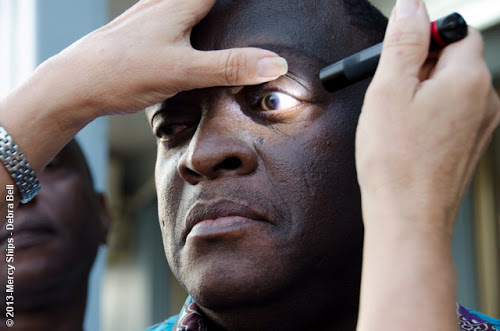Comprehensive Eye Center Andalusia: High Quality Eye Care Providers
Comprehensive Eye Center Andalusia: High Quality Eye Care Providers
Blog Article
Comprehending the Various Vision Correction Procedures Available for Clearer View
In the world of vision adjustment treatments, a plethora of options exist to attend to refractive errors and give individuals with more clear sight. From the commonly identified LASIK surgery to less invasive treatments like PRK and implantable lenses, the area of ophthalmology offers a variety of methods tailored to match various demands and preferences. Each procedure features its very own set of considerations, benefits, and potential threats. Understanding the subtleties of these vision correction methods is vital for making notified decisions regarding one's aesthetic health. Let's discover the details of these procedures and clarified the course to achieving boosted vision clearness.
LASIK Surgical Treatment
LASIK surgical treatment is an usual refractive treatment made use of to deal with vision problems such as astigmatism, farsightedness, and nearsightedness. This surgical strategy, which represents Laser-Assisted sitting Keratomileusis, intends to reshape the cornea to improve how light is concentrated on the retina, ultimately improving vision clarity. During the procedure, a slim flap is created on the cornea, and a laser is used to eliminate exact quantities of cells to reshape it suitably. This improving permits for light to be precisely concentrated onto the retina, fixing refractive mistakes.
One of the main benefits of LASIK surgical procedure is the fast enhancement in vision experienced by individuals. Generally, LASIK surgical treatment is a prominent option for individuals seeking a lasting service for their vision troubles.
PRK Procedure

PRK is an ideal choice for people with slim corneas or those at a higher danger of eye injuries, as it does not involve creating a corneal flap. The healing procedure for PRK is a little longer contrasted to LASIK, as the epithelium requires time to regrow. People might experience discomfort and blurry vision for a couple of days complying with the procedure.
Regardless of the longer recuperation time, PRK can yield exceptional lead to vision improvement, making it a valuable choice for those that might not appropriate candidates for LASIK surgery. - Cardiologist Andalusia
Implantable Lenses
As opposed to PRK where the cornea is improved straight, implantable lenses provide another technique for fixing vision by inserting fabricated lenses inside the eye. This procedure is particularly beneficial for individuals with high levels of astigmatism, farsightedness, or nearsightedness who may not appropriate prospects for laser surgical procedures like LASIK or PRK.
Implantable lenses, additionally known as phakic intraocular lenses, work by supplementing the eye's all-natural lens with a man-made one. These lenses can be put before the natural lens (anterior chamber) or behind the iris and before the all-natural lens (posterior chamber) By readjusting the power and positioning imp source of these lenses, ophthalmologists can efficiently deal with refractive mistakes and enhance aesthetic skill.
One benefit of implantable lenses is that they are detachable and exchangeable, giving adaptability for future adjustments. Nonetheless, similar to any type of surgical treatment, there are dangers included, such as infection or cataract formation. People thinking about implantable lenses must speak with an eye treatment expert to determine one of the most suitable alternative based on their specific demands and eye wellness.
Corneal Rings

The treatment for placing corneal rings is fairly quick and minimally intrusive, commonly executed as an outpatient procedure. Throughout the surgical treatment, the ophthalmologist makes a small cut in the cornea and inserts the rings at a particular depth. As soon as in location, the rings help to reshape the cornea, giving a smoother surface area for light to enter the eye, which can cause clearer vision.
Corneal rings are taken into consideration a reversible treatment, as they can be gotten rid of or changed if needed. While they might not completely get rid of the demand look at this site for glasses or call lenses, corneal rings can considerably boost vision quality and general aesthetic comfort for individuals with keratoconus or other corneal abnormalities.
Refractive Lens Exchange
Complying with the adjustment of corneal irregularities with treatments like corneal rings, an additional vision adjustment technique that can deal with refractive errors is Refractive Lens Exchange (RLE) RLE is a procedure that includes replacing the eye's natural lens with a man-made intraocular lens (IOL) to correct refractive mistakes such as presbyopia, nearsightedness, and farsightedness. This procedure is specifically valuable for people who may not appropriate prospects for procedures like LASIK or PRK as a result of aspects such as thin corneas or high refractive mistakes.
RLE is akin to cataract surgical treatment, as both include removing the eye's natural lens; however, in RLE, the lens is clear, not cloudy as in cataracts. The man-made lens implanted throughout RLE can be tailored to resolve the person's particular refractive error, offering clear vision at various ranges. Recovery time for RLE is reasonably fast, and clients can anticipate improved vision quickly after the procedure. Similar to any medical procedure, prospective dangers and problems exist, so an extensive examination with an eye care specialist is essential to establish if RLE is the ideal vision adjustment alternative.
Conclusion

In the world of vision improvement treatments, a wide range of options exist to address refractive errors and offer people with more clear sight.LASIK surgical treatment is a common refractive procedure made use of to fix vision problems such as nearsightedness, astigmatism, and farsightedness.While likewise a typical refractive treatment, the PRK (Photorefractive Keratectomy) method varies from LASIK surgical treatment in its strategy to fixing vision issues.Adhering to the correction of corneal irregularities with treatments like corneal rings, another vision modification method that can attend to refractive mistakes is Refractive Lens Exchange (RLE) LASIK surgery, PRK procedure, implantable lenses, corneal rings, and refractive lens exchange are all alternatives that can attend to different vision issues.
Report this page